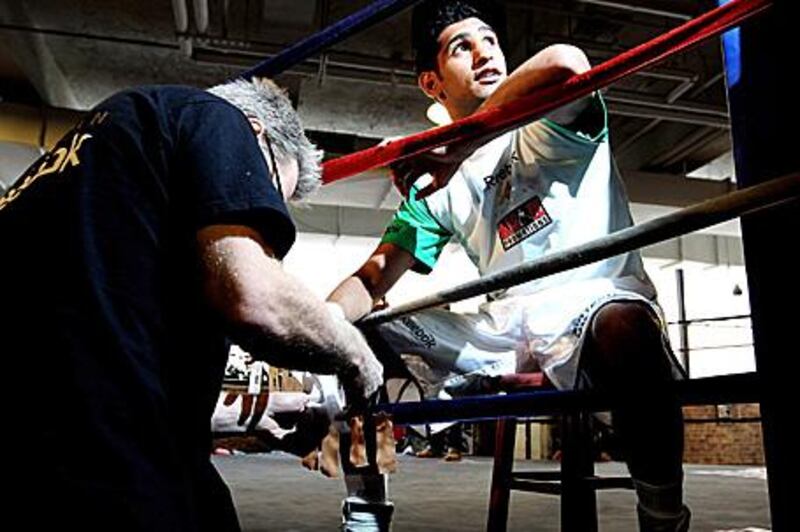When Amir Khan steps into the ring at the Theatre at Madison Square Garden in the early hours of tomorrow morning to face his latest challenge, he will tread the same path as the man with whom he shares a boxing bloodline. Thirteen years ago, "Prince" Naseem Hamed, a British Muslim of Yemeni descent, flew into New York amid much hyperbole to take on Kevin Kelley, a native of New York, in what Ring Magazine, the bible of boxing, named fight of the year in 1997. The pair gave new meaning to the term "going toe-to-toe", with each recording three knockdowns before Hamed won with a fourth-round stoppage.
The parallels between Khan and Hamed and the test that awaits the former when he meets Paulie Malignaggi are obvious and uncannily similar; both are from the north of England and both are megalomaniacs, convinced they are the greatest thing prior to, and since, sliced bread. The Garden was the venue when Hamed first sojourned across the Atlantic to woo American audiences and Khan will make his US debut there as well. Both chose boxers from Brooklyn as their first opponents.
The 23-year-old Khan (23-1-0), made a name for himself in 2004 when he won a silver medal at the Olympic Games in Athens and turned professional soon after. He set a goal of becoming a world champion before his 21st birthday, but his early fights highlighted an alarming chink in his armour. Though his hands and footwork were a blur, his chin was suspect. Punchers without pedigree, such as Richard Drizlane, exposed Khan by putting him on the canvas. Although he recovered to win, Khan was too often guilty of recklessly charging forward in other fights, leaving an inviting target when he did.
A loss to Breidis Prescott, the Colombian who was hand-picked by Jorge Rubio, Khan's former trainer, left his career at a crossroads. Rubio was subsequently sacked for suggesting the mismatch and Khan teamed up with Freddie Roach, the acclaimed trainer who has steered Manny Pacquiao to greatness. Roach had to cleverly marry Khan's natural go-forward instincts with a defence that would protect his chin. Roach quickly discovered that Khan was a better fighter with his feet planted, instead of using a perfunctory score-and-move style. Under Roach's expert guidance, Khan turned in a stellar 2009. He out-boxed Marco Antonio Barrera, the once-great Mexican fighter, to win a technical decision. He did the same against Andriy Kotelnik, turning in the finest performance of his career to win the WBA world light welterweight title by a wide decision. At 22, he was Britain's third-youngest world champion after Hamed and Herbie Hide. However, Malignaggi is a fighter who seems to perform better when there is needle involved with his opponent. The pair touched heads and were seen arguing before they began pushing each other at yesterday's weigh-in.
Against Juan Diaz in his last two bouts, he had a real chip on his shoulder. Many thought he edged a close first fight, but he left the judges in no doubt who was the victor in the second. He laid good traps for Diaz, and his shots, particularly his jab, carried real venom. History suggests Malignaggi, 29, who has just five knockout wins, the last of which came back in 2003, is unlikely to stop Khan but bigger punchers than Khan, such as Hatton and Miguel Cotto, have failed to put him down.
sluckings@thenational.ae






